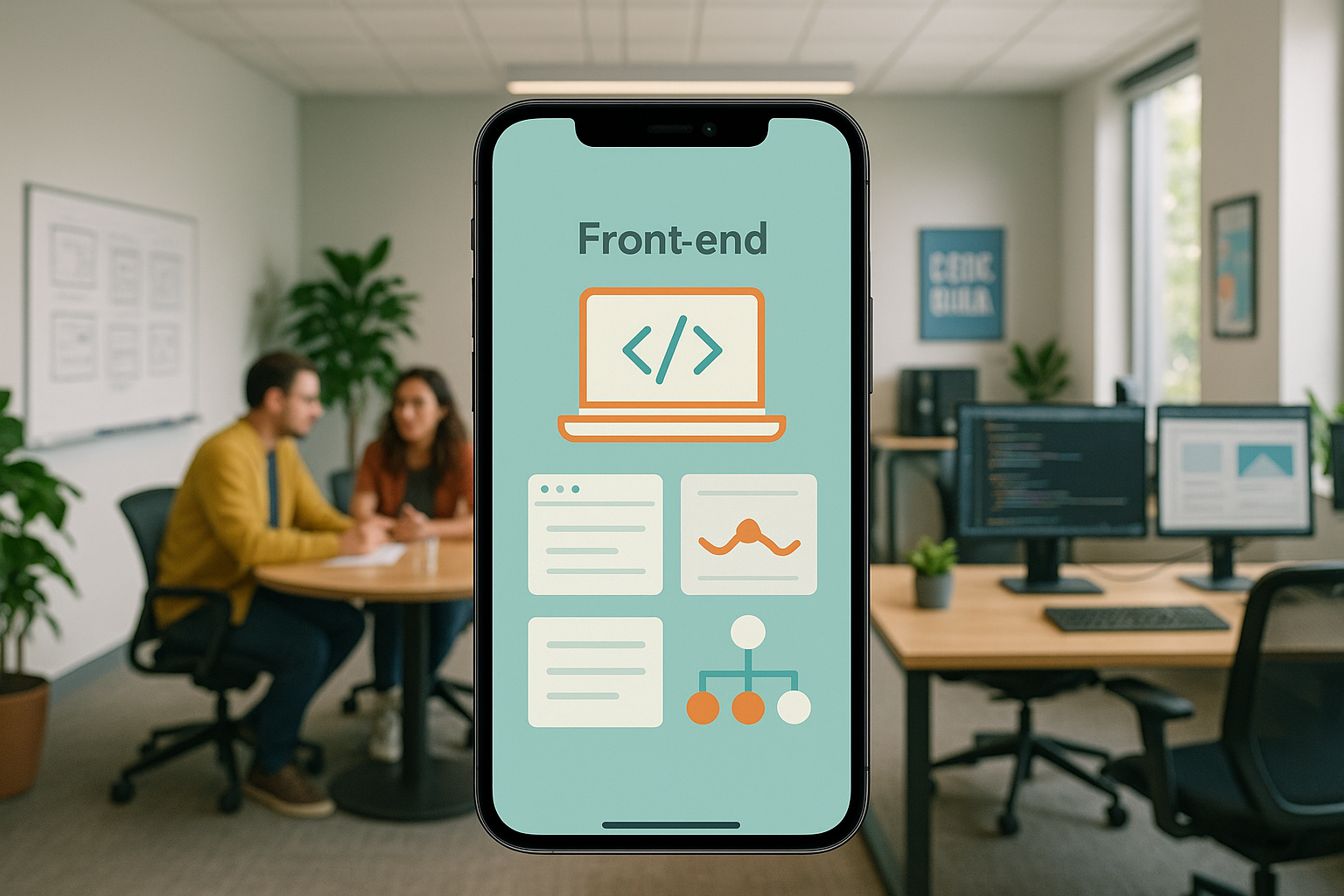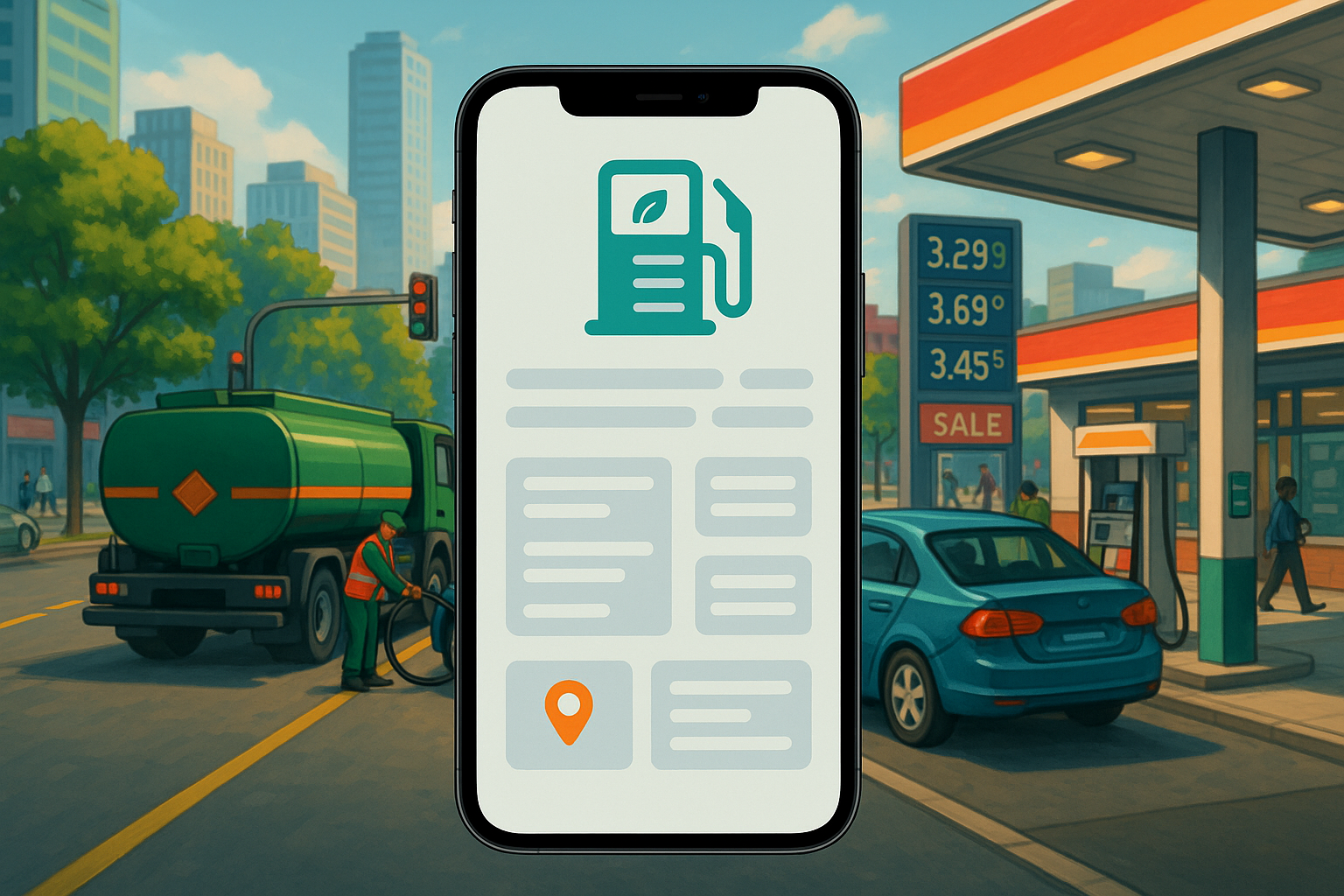Front-end development is often misunderstood as simply the visual layer of an application. While it’s true that the front end is what users see and interact with, the process of creating that experience is fraught with complexities. Many developers struggle with its multifaceted nature, which demands a unique blend of precise coding and intuitive design. Building a successful front-end application in-house is a significant undertaking that can strain resources and derail timelines.
As a top US AI-powered mobile app development firm with over 20 years of experience, we at MetaCTO have guided over 120 projects from concept to launch and beyond. We understand that front-end development is hard. This comprehensive guide will walk you through the critical aspects of front-end app development. We will explore what a front-end app is, the challenges that make in-house development difficult, the different application architectures you can choose from, and the potential costs involved. We will also introduce you to top development companies that can help bring your vision to life, demonstrating how a partnership with an experienced agency like ours can make the difference between a struggling project and a market-leading application.
What is a Front End App?
A front-end application is the part of a software application that users can see, use, and directly interact with. It is commonly known as the user interface (UI) and is often considered the client side of an application. This layer is absolutely critical not only to the visual aspects of the app but also to the entire user journey. Every button, image, menu, and piece of text a user engages with is part of the front end. It is the sum of all visual and interactive elements that can be experienced by all users.
Three core technologies form the backbone of virtually every front-end application: HTML, CSS, and JavaScript.
HTML (HyperText Markup Language)
HTML is a front-end application that lays the actual foundation for every site that lives on the web. It is the standard markup language used to create web pages, providing the fundamental structure and content. By enabling the display of pages, HTML acts as the skeleton upon which all other front-end elements are built.
CSS (Cascading Style Sheets)
If HTML is the skeleton, CSS is the skin and clothing. CSS is a front-end application critical for the complete customization of a web page. It determines the layout and style, allowing developers to adjust and modify every element of the content. This includes details like font size, spacing between elements, colors, and even complex animations, ensuring the application is not just functional but also visually appealing and on-brand.
JavaScript
JavaScript is the key that provides the interactive elements of a web page that a user directly engages with. Functioning as a text-based programming language, JavaScript is formatted around its own unique language. It is used in front-end development to bring the static elements defined by HTML and styled by CSS to life. Unlike some other languages, JavaScript dynamically interprets each singular piece of code one at a time, verifying it in real time to ensure a seamless interface process. This real-time verification and ability to manipulate the page’s content make it essential for creating modern, responsive, and engaging user experiences.
Reasons It Is Difficult to Develop a Front End App In-House
While it may seem straightforward on the surface, front-end development is hard. It is filled with complexities that can challenge even seasoned development teams, which is why many companies seek expert assistance from a dedicated custom mobile app development partner. The multifaceted nature of the discipline, combined with the need for absolute precision in both coding and design, causes many developers to struggle.
Here are some of the most significant hurdles that make in-house front-end development a formidable task.
Common Hurdles and Complexities
Teams often encounter a set of recurring problems during the development lifecycle. These common hurdles can stall progress and compromise the quality of the final product.
- Lack of Consistency: Maintaining a consistent look, feel, and behavior across a large application, especially with multiple developers, is a constant battle.
- Performance Issues: Slow load times, unresponsive interfaces, and memory leaks can ruin the user experience and lead to high abandonment rates.
- Difficulty Implementing Features: What seems like a simple feature on a design mockup can become a complex implementation challenge due to underlying architectural constraints or unforeseen technical dependencies.
The Pillars of Front-End Difficulty
Beyond the general hurdles, there are specific, technical challenges that define the complexity of modern front-end development. Mastering these areas demands rigorous discipline and a commitment to continuous learning.
Responsive Design
In today’s multi-device world, an application must look and function flawlessly on a vast array of screen sizes, from small mobile phones to large desktop monitors. This is the essence of responsive design. It is not merely about shrinking or stretching elements; it involves rethinking layouts, navigation, and interactions for different contexts. Building truly responsive designs is a common challenge that demands a deep understanding of CSS, media queries, and flexible grid systems.
Cross-Browser Compatibility
Users access applications through various web browsers like Chrome, Firefox, Safari, and Edge, each with its own rendering engine and quirks. Ensuring that an application works consistently across all major browsers is a notorious complexity of front-end development. It requires meticulous testing, debugging, and often, writing browser-specific code or using polyfills to ensure a uniform experience for every user, regardless of their preferred browser.
Performance Optimization
A beautiful application that is slow to load is a failed application. Performance optimization is a critical and common challenge that involves minimizing file sizes, optimizing images, reducing the number of server requests, and writing efficient code. This process, which includes techniques like code splitting, lazy loading, and effective caching, demands rigorous discipline. Optimizing an application’s performance is an ongoing task essential for retaining users and improving search engine rankings.
These deep-seated challenges are why many businesses turn to us. Our teams have spent years mastering these complexities. We have established processes and best practices to ensure every application we build is responsive, compatible, and highly performant from day one.
Different Types of Front End Apps
The front-end landscape is not monolithic. There are several distinct architectures, and the choice of which to use has profound implications for development, scalability, and user experience. Each of the most commonly used frontend architectures comes with its own set of advantages and disadvantages. Choosing the right one is a critical strategic decision, often requiring the guidance of an experienced partner like a Fractional CTO.
Single Page Application (SPA)
A Single Page Application consists of one or just a few JavaScript files that encapsulate the entire front-end application. The defining characteristic of a SPA is that the client downloads the entire application code just once, at the beginning of its life cycle.
- How it Works: With the entire application logic available up front, when a user clicks a button or navigates, the application does not reload the whole page. Instead, it dynamically renders only the necessary part of the page. This allows users to jump from one part of the application to another without long waits. A SPA also allows a decision on how to split logic between the server and client, leading to “fat client with thin server” architectures (common for apps needing offline data) or “thin server with fat client” models.
- Advantages: The primary benefit is a fluid, fast-feeling user experience after the initial load.
- Disadvantages: SPAs face significant challenges. For SEO, it is hard for crawlers to navigate and index all the content unless an alternative way of fetching it is prepared. Downloading the entire application at once can lead to memory leakage as users move between views and provides a very bad user experience on an unstable connection. SPAs will not run smoothly on devices without great hardware. Finally, for large organizations, it is very hard for a big team to work on the same SPA codebase without creating a mix of approaches that confuses team members.
Isomorphic (Universal) Application
Isomorphic, or universal, applications are web applications where the code between the server and client is shared and can run in both contexts. They represent a hybrid approach designed to capture the benefits of both server-side rendering and SPAs.
- How it Works: In an isomorphic app, the server does the heavy work of rendering the initial view, retrieving data, and generating the page. It serves the client a fully-rendered HTML page, which improves the time to interact because no additional data requests are needed. After this initial load, additional JavaScript files can be lazy-loaded, and the application can behave like a SPA. The decision of how much code is shared is based on project requirements.
- Advantages: Isomorphic apps are beneficial for SEO, as crawlers receive a complete HTML page ready for immediate indexing. They also offer excellent time-to-interact and allow A/B testing platforms to be integrated nicely without much effort.
- Disadvantages: These applications could suffer from scalability problems if a project is visited by millions of users. Because the HTML page is pre-rendered on the server, creating the right caching strategy is critical to minimize server impact. Organization-wise, isomorphic applications suffer from similar problems as a SPA when it comes to managing a large team on a single codebase.
Static Page Websites
This is the old-school method where every time a user clicks on a link, they are loading an entirely new static page from the server.
- How it Works: Each page is a separate HTML file. While this method seems dated, it is still in use for quick websites meant to be online for a short period. In recent years, this type has mutated into single-page sites that expand vertically instead of loading different pages, often lazy-loading content as the user scrolls.
- Advantages: The primary benefit is the extremely low investment required on the technical side.
- Disadvantages: The user experience can feel slow and disjointed compared to modern architectures.
Jamstack
Jamstack is a new and modern frontend architecture that uses JavaScript, APIs, and pre-rendered Markup to help create fast and secure sites and dynamic apps.
- How it Works: With Jamstack, the entire front end is pre-built into highly optimized static pages and assets during a build process. This output, a static artifact of HTML, CSS, and JavaScript, is then served directly from a Content Delivery Network (CDN). A Jamstack application doesn’t require any server-side technology to work for rendering the UI; any dynamic functionality is handled by JavaScript calling reusable APIs.
- Advantages: Jamstack offers better performance, cheaper infrastructure and maintenance, higher security due to the decreased attack surface, and easy integration with headless CMS platforms.
Micro-Frontend
Inspired by microservices, the micro-frontend is an emerging architecture that solves the organizational scaling problems of monoliths like SPAs and isomorphic apps.
- How it Works: The main idea is to break down a monolithic codebase into smaller, more manageable parts. This allows an organization to spread the work among multiple, independent teams, each responsible for a specific feature or section of the application. In this model, teams and organizations are structured according to the desired architecture, not the other way around.
- Advantages: Business logic and code complexity are drastically reduced within each micro-frontend. This approach is easier when a component-driven development style can be applied and can be combined with any backend architecture, from microservices to a monolith.
- Disadvantages: The primary drawback is the significant overhead that must be considered for automation, governance, observability, and communication between teams to ensure the separate parts form a cohesive whole.
Cost Estimate for Developing a Front End App
Estimating the cost of app development is complex, as it depends heavily on the features, complexity, and chosen technology stack. However, we can provide some benchmarks based on industry data.
A critical and often underestimated part of the budget is the initial phase of development. The cost of the prototyping and design phase of app development typically takes $15,000 to $30,000. This phase is essential as it involves creating a visual mockup of the app’s user interface, screens, and simulated functions without any working code. This prototype is modeled before the real app to receive critical feedback from end-users, ensuring that what gets built is what users actually want.
For full development cycles, some companies offer fixed-price packages that give a clearer picture of total investment. For example, the development company Droids On Roids offers:
- A medium fixed-price Mobile App Development package for $65,000, which includes Designs, Flutter development, and Backend.
- A large fixed-price Mobile App Development package for $80,000, which includes everything in the medium package plus a Discovery phase.
These figures highlight that front-end development is an investment. At MetaCTO, our Rapid MVP Development service is designed to maximize this investment by focusing on getting a functional, validated product to market in 90 days. By prioritizing the most critical features and gathering real-world feedback early, we help you control costs and build a foundation for long-term success.
Top Front End App Development Companies
Choosing the right development partner is arguably the most important decision you will make. An expert partner brings not just coding skills, but strategic guidance, proven processes, and a deep understanding of user experience. Below are some of the top companies in the field, recognized for their expertise in front-end and UI/UX design.
| Company | Noteworthy Front-End Expertise |
|---|---|
| 1. MetaCTO | As a US-based, AI-enabled mobile app development firm with a 5-star rating on Clutch, we have over 20 years of experience and have launched over 120 successful projects. We handle every step, from validating an idea with a 90-day MVP to building, growing, and monetizing the app. Trusted by brands like ATP and Liverpool FC, we transform big ideas into market-ready products with a phenomenal user experience. |
| 2. EB Pearls | Created new wireframes and enhanced the app’s UI for a telecommunications firm’s mobile app. |
| 3. Atomic Object | Was hired to build the frontend of a real estate technology company’s mobile app on both iOS and Android. |
| 4. you are launched | Their services include a 10% focus on UX/UI Design, indicating its integration into their development process. |
| 5. Konstant Infosolutions | Their services include 10% UX/UI Design, and their package explicitly describes creating a visual mockup to receive end-user feedback before coding begins. |
| 6. TechAhead | Their clients particularly appreciate their user-centric design approach. |
| 7. Droids On Roids | Offers fixed-price packages ($65k-$80k) that explicitly include “Designs” as a core component of the offering. |
| 8. TechnoYuga Soft Pvt. Ltd. | Their clients frequently highlight their exceptional UI/UX design capabilities. |
| 9. JPLoft | Their services include 10% UX/UI Design, and they have experience planning, designing, and developing mobile apps for verticals like dating. |
We’ve journeyed through the intricate world of front-end development, defining what a front-end application is by its core technologies—HTML, CSS, and JavaScript. We have detailed the significant challenges of responsive design, cross-browser compatibility, and performance optimization that make in-house development so difficult. We also explored the diverse landscape of application architectures, from SPAs and Isomorphic apps to Jamstack and micro-frontends, each with unique trade-offs. Finally, we provided insight into development costs and highlighted key partners who can navigate this complexity.
Front-end development is a critical, complex, but ultimately manageable discipline when approached with the right expertise and strategy. It is the bridge between your business and your customer, and its success is paramount. Don’t let the complexities of front-end development hold your project back. Our team at MetaCTO is ready to transform your vision into a high-performing, user-friendly application.
Talk with a Front End app development expert at MetaCTO today to discuss your project and learn how we can help you succeed.






